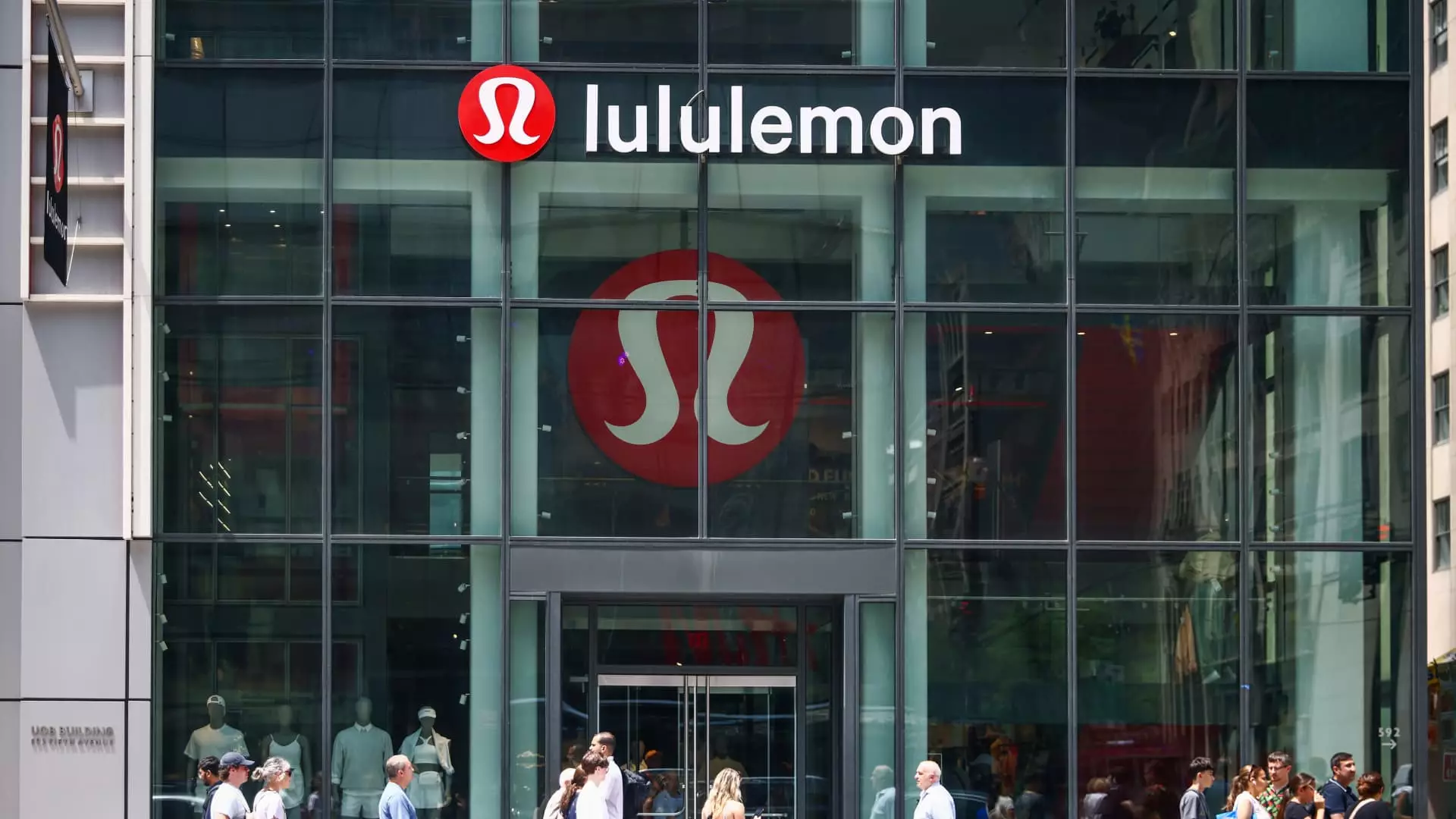Lululemon’s latest quarterly earnings report presents a mixed picture that encapsulates the company’s impressive revenue growth while simultaneously highlighting significant challenges on the horizon. The athletic apparel brand posted fourth-quarter earnings that surpassed Wall Street’s expectations, with earnings per share hitting $6.14 versus the anticipated $5.85 and revenue reaching $3.61 billion instead of $3.57 billion. While this seems promising at first glance, the resulting market reaction—a notable 6% drop in share price after hours—reveals a more complex situation. Investors are clearly discerning the gap between Lululemon’s past performance and its projected future, a gap that should not be ignored.
Questionable Forecasts Hindering Investor Confidence
One of the most glaring issues from Lululemon’s report is the guidance provided for 2025, which fell short of analyst expectations. Predicting revenue of $11.15 billion to $11.30 billion compared to the anticipated $11.31 billion, Lululemon’s projection raises eyebrows. In an era where brands are competing fiercely in the athleisure market, even minor revenue discrepancies can lead to significant shifts in investor confidence. It showcases a potential struggle with sustainability in their skyrocketing sales trajectory, especially against a backdrop of mounting market competition. For a company that has cultivated loyalty among its consumer base, this stumble in forecasting begs the question: can Lululemon keep its impressive momentum going?
Uneven Performance Across Regions
While Lululemon marked an 8% year-over-year growth in overall revenue for fiscal 2024, a closer examination reveals a stark regional disparity. Comparable sales in the Americas remained flat, suggesting possible market saturation or a failure to resonate with local consumers. Conversely, the international market thrived, with sales soaring by an impressive 20%. This disparity highlights a critical vulnerability; the brand’s reliance on international growth could backfire if global economic conditions shift. A diversified strategy seems crucial for sustaining growth, particularly as competitors attempt to eat away at Lululemon’s market share domestically.
Challenges beyond the Numbers
The 53-week fiscal year that bolstered Lululemon’s revenue figures further complicates any straightforward analysis of its financial health. While excluding this extra week puts a different spin on growth rates, discerning how much of that growth is organic is critical for investing decisions. The reality behind the numbers is stubbornly complex, and investors will need to examine more than just the shiny statistics that Lululemon is offering. Furthermore, the flat comparable sales in the Americas relying heavily on their established base raises flags about innovation and adaptability within a rapidly changing retail landscape.
Looking Ahead: The Balance of Optimism and Realism
Despite Lululemon’s impressive earnings, the juxtaposition of celebrated victories with sobering realities reflects the three-dimensional nature of corporate performance today. Consumers have high expectations, and with inflationary pressures and supply chain issues persisting, brands can’t afford to relent on innovation or value. Lululemon must navigate these challenges with agility, striving to maintain its loyal consumer base and explore new opportunities while investing in its long-term viability. However, the question remains—can this brand with past accolades pivot effectively to meet future expectations? The answer lies not just in its earnings, but in its strategic adaptability.

